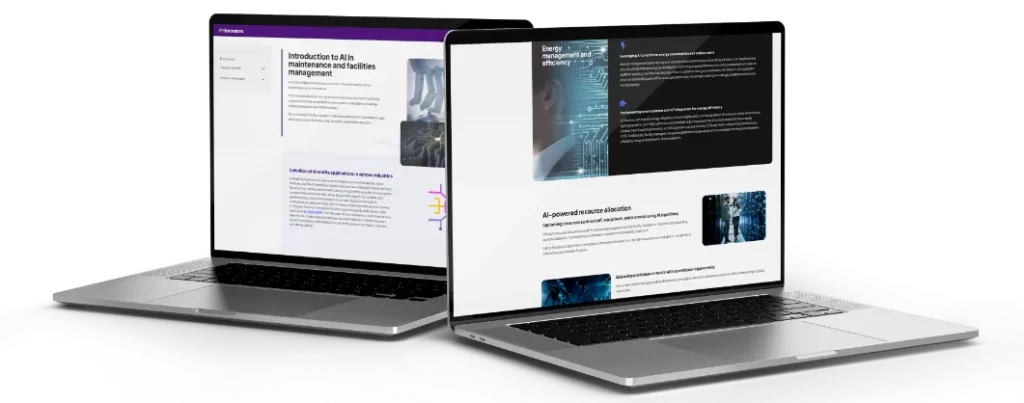Over the last few decades, several industries have completely changed. Taxis, food delivery, hospitality, fashion, and even home repairs. Yet, throughout these enormous changes, maintenance has stayed the same. There have been disruptive technologies, sure, but the sharing economy and gig economy have not made a dent in technical services. Now, is that about to change? What is the “uberisation of technicians and field services” all about?
Why do ‘uberised’ services have an edge?
Although we’re all familiar with Uber® and similar apps, perhaps you’ve never taken a minute to think about what made them so successful. In many European cities, Ubers are cheaper than taxis. In fact, taxi drivers often complain of “unfair competition” from ride-sharing apps. Unregulated markets allowed them to operate with fewer expenses and, thus, they could offer cheaper prices.
However, that is not the case for all markets. You might be surprised to know that taxis are usually cheaper than Ubers in New York City. And in some countries where drivers need to be licensed, like Italy, ride-sharing is usually more expensive than taxis. So the price point doesn’t entirely explain its popularity. What does explain it, however, is convenience.
We live in a fast-paced world where everything must be readily available. For customers, it’s an era of instant gratification — and ‘uberised’ services meet that demand.
Why hasn’t there been an uberfication of field services yet?
Drivers providing car rides need to prove they hold a valid driver’s license and, in some cases, that their cars meet certain criteria. However, those aren’t demanding barriers to entry. On the other hand, the uberisation of field services will require a more thorough vetting process. Prospective technicians need to assure people they have:
- the right skill set;
- the appropriate tools;
- enough experience in the area;
- familiarity with each type of equipment.
In maintenance and facility management, the key aspect for success is the ability to deliver high-quality services consistently. Therefore, any service company using third parties, or any software connecting users to field services technicians, needs to double check all the criteria above. Besides, it needs to provide proof of service (e.g., proof of cleaning) to earn trust.
However, we can also predict those barriers to entry will fade with the introduction of further technology. It’s not hard to imagine solutions that would help these freelancers and offer clients further guarantees:
- Companies can create a database of standard operating procedures to help field technicians (or a third-party may prove them in-app, for a fee);
- Senior technicians and managers can provide remote guidance using 5G networks without latency;
- Companies and manufacturers may use Artificial Intelligence for greater accuracy in diagnosis (likely for fee);
- Some services can be performed with the assistance of cobots or even by robots operated by technicians, increasing safety.
The remaining features needed for ‘uberised’ maintenance already exist. The most advanced Intelligent Maintenance Management Platforms (IMMP) out there increasingly enable uberisation:
- Clients can easily report failures on a mobile app, without reaching out to a contact centre;
- The platform automatically assigns the work order to a technician using artificial intelligence (see Infraspeak Gear™);
- The client can see the technician’s location and ETA;
- The client can see the technician’s ID and their certifications, to increase transparency;
- Managers can check everything in real-time and provide support if needed.
– Miguel Iacomussi, Corporate Manager of Digital Transformation and Innovation at Vivante, one of the biggest facility management providers in Brazil
Finally, we need to take into consideration that there’s a highly-skilled workforce who may be eager to strike out on their own. Working freelance, or at least being able to choose the tasks they want through an app, will provide more flexibility to technicians who’d like to choose their schedule or that are struggling to find a good balance with their family life.
Extra: Manufacturers may “make or break” uberisation
It’s worth noting that manufacturers aren’t necessarily excluded from this business model. Let’s see how it could work:
Manufacturers provide standard operating procedures to certified technicians and engineers
Manufacturers may be obliged to provide technical information and maintenance plans to certified technicians. This is similar to what happened to car maintenance, for example. Before, you needed to repair your car in an official dealership to keep the manufacturer’s warranty.
But, under the European Union Block Exemption legislation — which still stands in the UK — you can go to an independent mechanic without losing your car’s warranty, as long as the manufacturer’s guidelines are followed and your service book is stamped.
Manufacturers take the wheel with their own ‘uberised’ field services
In another twist, manufacturers could develop their own technology. Clients would then have access to an app where they can report a failure and look for manufacturer-approved and trained technicians. This would likely help them find a solution faster, apart from increasing brand awareness and satisfaction.
For their part, manufacturers could leverage this technology to provide “maintenance-as-a-service” without investing in a huge customer support infrastructure (communication is mostly in-app, decreasing the need for call centres, for example) or integrating dozens of technicians on their payroll without testing demand.
For a long time, the uberisation of field services seemed a laborious endeavour. Now, technology is reshaping maintenance and facility management, moving them closer to uberised services. Service providers that want to withstand these coming changes will need to focus on delivering good, quick and reliable services and on providing a customer experience that offers instant gratification – with the help of intelligent technology, of course.



